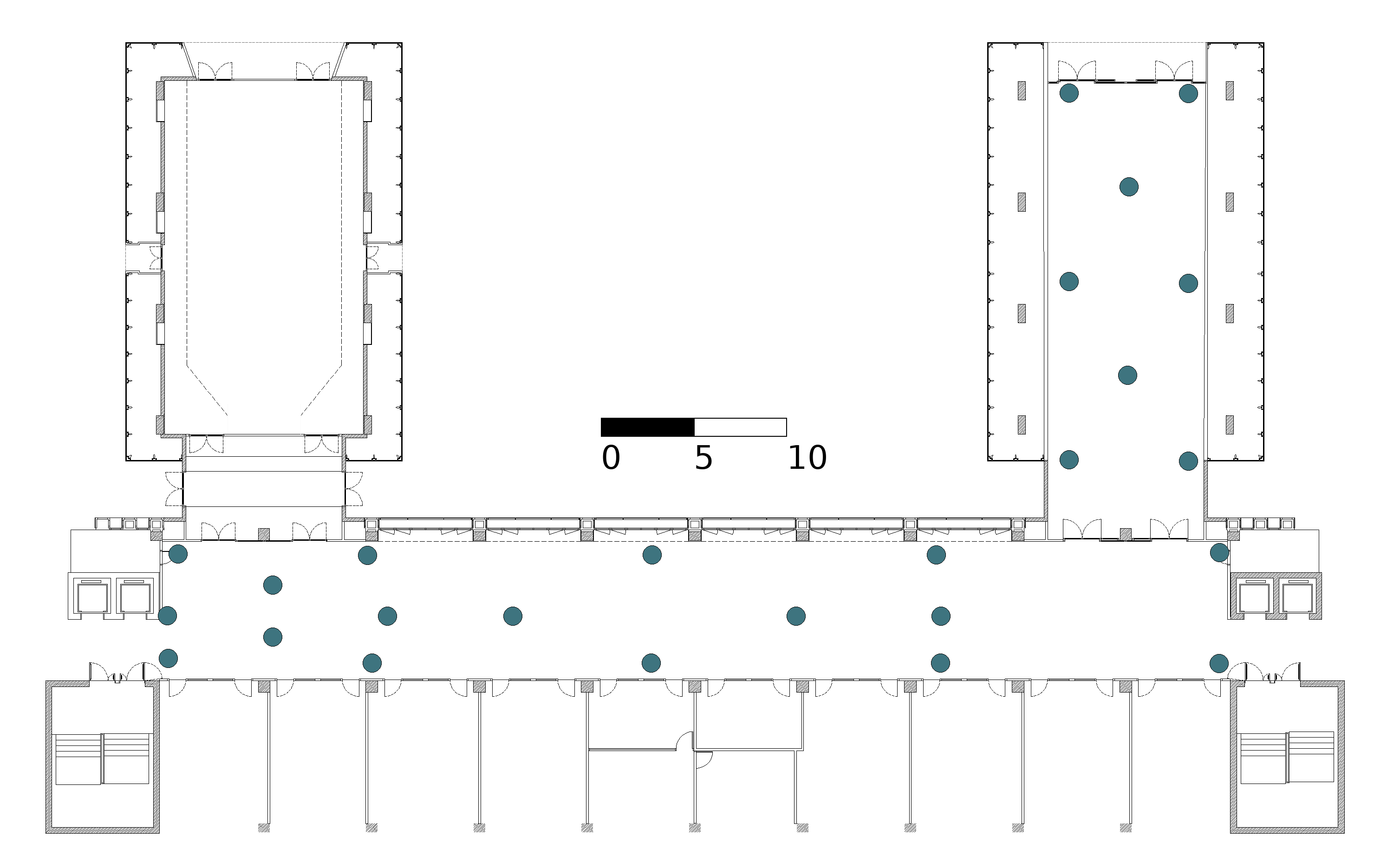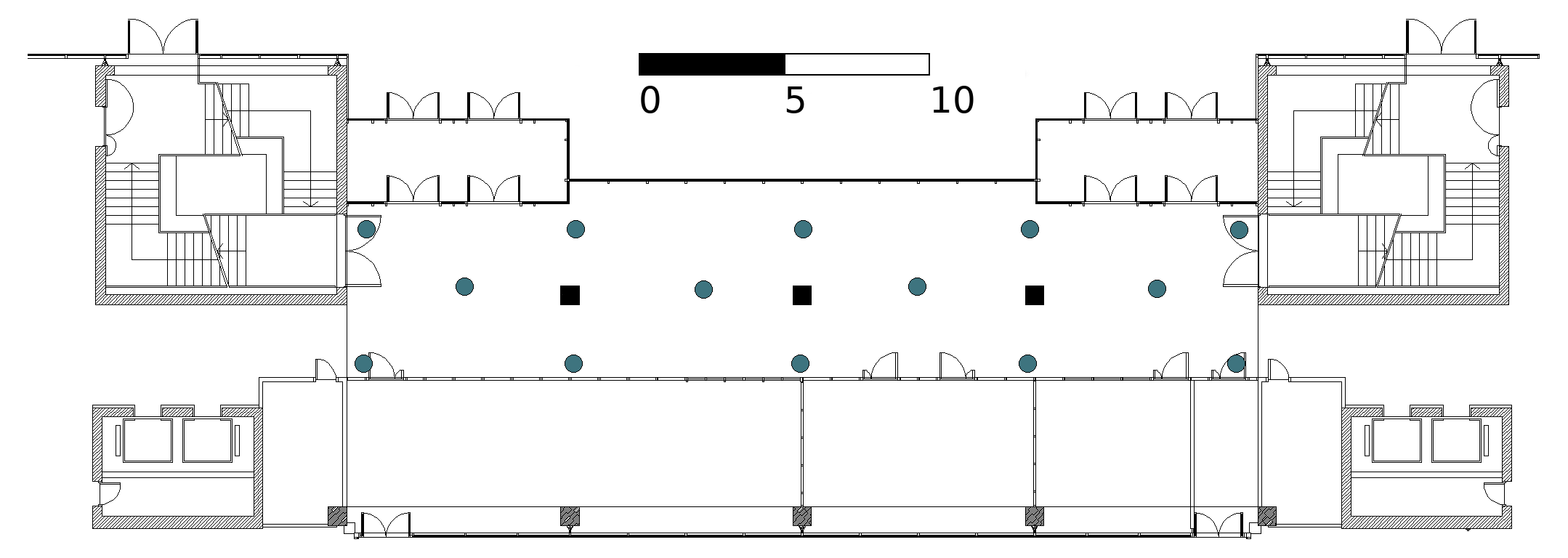Maps
CLOVES is a large-scale testbed at the University of Trento (Italy). It consists of 130 nodes, all hosting ultra-wideband (UWB) devices together with narrowband ones, deployed in three distinct areas: Dept, Hall-A, Hall-B.
Dept
Dept (91 nodes, 6382 m2) spans the entire Department of Information Engineering and Computer Science (DISI); two floors in nearby buildings, connected by a suspended passageway. Nodes are mostly deployed on the corridors among offices, laboratories, and meeting rooms. Their narrow (2.4–3.2 m) and long (up to 134 m) dimensions likely induce strong signal reflections, exacerbated in the passage-way by its narrower width (1.72 m) and metallic frame. However, wider areas are also present, overall yielding a realistic environment with mixed geometrical and signal propagation characteristics.

Hall-A
Hall-A (25 nodes, 666 m2) is an L-shaped area on the ground floor of one the buildings. The top sub-area (10 × 24.5 m) is the entrance; the bottom one (57.7×7.3 m), connected by a sliding door, has office accesses on one side and student tables on the other. All nodes in a sub-area are in line of sight (LOS); communication across sub-areas is often in non-line-of-sight (NLOS).

Hall-B
Hall-B (14 nodes, 205 m2) is the entrance to the other building, smaller in size and with several columns yielding NLOS conditions.

Infrastructure
The devices are contained in a box along with the ST-LINK V2 programmer necessary to upload firmware on the UWB platform (EVB1000), all connected via USB to a Raspberry Pi 3 (RPi) through which they can be reprogrammed and controlled, and experiment logs are collected. All of the above constitutes a CLOVES node, attached to wooden tiles in the drop ceiling, simplifying installation and maintenance. Cables run through the tile holes, hidden from sight, including those powering the RPi (and attached devices) and the Ethernet cable enabling remote access via the testbed server.
The CLOVES workflow is managed entirely via a Web interface or a Python client. The user can schedule experiments of fixed duration, program devices with any custom firmware, and download the logs. Further, the devices participating in the experiment can be selected and operated upon at once, via predefined groups, or individually, e.g., to obtain specific topologies or manage their different firmware. Additional features under development support the safe execution of custom scripts and MQTT as a higher-level means to configure a device or retrieve its logs.